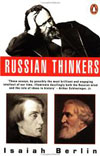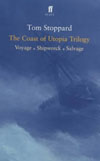Last spring i gave a talk at the Getty Research Institute organized by Bill Tronzo, an art historian at UC San Diego. Bill told me about a conference he’s planning for 2008 on the subject of fame and said he was interested in exploring new ways of presenting the conference proceedings. i invited Bill to come to NY to discuss this with me, ben, dan, ray and jesse. In the course of the discussion we convinced Bill that it would be really interesting to re-think not just the form of the proceedings that get published after the conference, but the structure of the academic conference itself. For anyone whose been to a big academic meeting lately and sat through endless panels where anywhere from five to as many as ten people get a few minutes to read or summarize a paper it’s clear that the form is need of an overhaul. Academic conferences, just like academic presses, have been perverted and turned away from their original purpose — to encourage and enable intellectual discourse — in order to become key vehicles in the tenure/review process.
The connection between re-thinking conferences and re-thinking books goes much deeper. As regular readers of if:book know a lot of our work involves expanding the boundaries of “a book” to include the process that leads up to its creation and the conversation that it engenders. Why not try to expand the notion of a conference to include various aspects of pre-meeting effort and the conversation that goes on during the conference and afterwards. From one perspective, we’re not suggesting profoundly different action but rather attempting to capture a lot of what happens in a form that is likely to strengthen the impact of the effort.
We suggested to Bill that it would be interesting to co-sponsor a meeting of a small eclectic group to discuss how we might re-imagine a conference. Gail Feigenbaum and Tom Moritz, the two deputy directors of the GRI were enthusiastic and we held a one-day meeting last week with ten people. meeting planning blog and notes are here.
Following are some notes i wrote after the meeting:
. . . for me the most important outcome of the day was to loosen up long-standing preconceptions about conference formats; we’ve just touched the surface here and i hope we might find a way to continue the process and deepen our understanding of these issues in the coming months. following are a few thoughts i jotted down on the plane back to NY today. in rereading quickly i think i may have said the same thing six slightly different ways . . . . hopefully at least one will make sense.
is the principal purpose of a conference to provide an excuse/motivation for the writing of a paper or is it to enable face-to-face discussion about questions and themes within a particular discipline. i think it might be too easy to say that of course it’s both. i’m wondering which is primary.
the traditional conference which is structured around the presentation of papers might be putting the emphasis on the wrong aspect; focusing on the presentation of the author/speaker while leaving the discussion for the hallways, dinner tables and cocktail lounges. conferences officially capture the one thing which you don’t need a conference to capture – the written record of the formal paper. we can do better than this.
what would happen if we saw the principal purpose of a face-to-face conference getting people to look at discipline-specific problems in new ways; i.e. not mainly generating new knowledge in the form of papers, but encouraging a re-thinking and/or deeper analysis of the key issues in the field. from this perspective, the role/goal of the organizer is to ask good questions and create an environment for a vigorous discussion, sending people home with fresh perpectives for approaching their work.
what happens if the stars of a conference aren’t the writers of papers but rather brilliant discussion moderators who know how to lead engaging discussions? what happens if the important yield of a conference isn’t pre-prepared papers but a “record” of a complex discussion which deepens everyone’s understanding of the questions.
what happens if we see papers not as what happens “at conferences” but what happens between conferences?
what happens if we begin to see the most important aspect of knowledge, not the content of papers but the discussion about the ideas in a paper?
i’m quite sure that many of these questions i’m raising are too simplistic, but am hoping that they might help continue the process of trying to understand the essential purpose of academic discourse and the forms it might take.
Monthly Archives: February 2007
back to the backlist
 An article in last Sunday’s NYT got me thinking about how book sales can be affected by media, in quite different ways than music, or even movies are, as illustrated in Chris Anderson’s blog mentioned here by Sebastian Mary. While bands, and even cineasts, are increasingly using the Web to share and/or distribute their productions for free, they are doing it in order to create a following; their future live audience in a theater or club. Something a bit different happens with classical music, and here I include contemporary groups that don’t fit the “band” label, where the concert experience usually precedes the purchase of the music. In the case of classical music, the public is usually people who can afford very high prices to see true luminaries at a great concert hall, and who probably don’t even know how to download music. The human aspect of the live show is what I find fascinating. A great soprano might be having a bad night and may just not hit that high note for which one paid that high price, but nothing beats the magic of sound produced by humans in front of one’s eyes and ears. Though I love listening to music alone, and the sounds of the digestion of the person sitting next to me in the theater mortify me, I wouldn’t exchange the experience of the live show for its perfectly digitized counterpart.
An article in last Sunday’s NYT got me thinking about how book sales can be affected by media, in quite different ways than music, or even movies are, as illustrated in Chris Anderson’s blog mentioned here by Sebastian Mary. While bands, and even cineasts, are increasingly using the Web to share and/or distribute their productions for free, they are doing it in order to create a following; their future live audience in a theater or club. Something a bit different happens with classical music, and here I include contemporary groups that don’t fit the “band” label, where the concert experience usually precedes the purchase of the music. In the case of classical music, the public is usually people who can afford very high prices to see true luminaries at a great concert hall, and who probably don’t even know how to download music. The human aspect of the live show is what I find fascinating. A great soprano might be having a bad night and may just not hit that high note for which one paid that high price, but nothing beats the magic of sound produced by humans in front of one’s eyes and ears. Though I love listening to music alone, and the sounds of the digestion of the person sitting next to me in the theater mortify me, I wouldn’t exchange the experience of the live show for its perfectly digitized counterpart.
 This long preface to illustrate a similar, but rather odd, phenomenon. Russian Thinkers by Isaiah Berlin has disappeared from all bookshops in New York. Anne Cattaneo, the dramaturg of Tom Stoppard’s “The Coast of Utopia” (reviewed here by Jesse Wilbur) which opened at Lincoln Center on Nov. 27, provided in the show’s Playbill a list titled “For Audience Members Interested in Further Reading” with Russian Thinkers at the top. Since then, the demand for the book has been such, that Penguin has ordered two reprintings (3,500 copies) for the first time in the twelve years since the book has been printed, and which used to sell about 36 copies a month in the whole US. “A play hardly ever drives people to bookstores” says Paul Daly a book buyer, but Stoppard’s trilogy has moved its audience to resort not only to the learned notes inserted into the Playbill, but to further erudition on the Internet in order to figure out the more than 70 characters depicting Russia’s 19th century amalgam of intellectuals dreaming of revolution.
This long preface to illustrate a similar, but rather odd, phenomenon. Russian Thinkers by Isaiah Berlin has disappeared from all bookshops in New York. Anne Cattaneo, the dramaturg of Tom Stoppard’s “The Coast of Utopia” (reviewed here by Jesse Wilbur) which opened at Lincoln Center on Nov. 27, provided in the show’s Playbill a list titled “For Audience Members Interested in Further Reading” with Russian Thinkers at the top. Since then, the demand for the book has been such, that Penguin has ordered two reprintings (3,500 copies) for the first time in the twelve years since the book has been printed, and which used to sell about 36 copies a month in the whole US. “A play hardly ever drives people to bookstores” says Paul Daly a book buyer, but Stoppard’s trilogy has moved its audience to resort not only to the learned notes inserted into the Playbill, but to further erudition on the Internet in order to figure out the more than 70 characters depicting Russia’s 19th century amalgam of intellectuals dreaming of revolution.
Penguin has asked Henry Hardy, one of the original editors of the book to prepare a new edition that could be reissued as a Penguin Classic. If all this is product of a play whose audience is evidently interested in extracting, and debating, the meaning of its characters, a networked edition would have made great sense. Printed matter seems to have proven insufficient here.
